(Originally posted at http://www.russbateman.com/penn.html
HISTORY OF JOHN SAMUEL BARTON
Copied from text by Arta Barton Smith, Lehi, Utah, April 1962
Information from sons William H. and Dave Barton, 1954. Dates from family records. Facts arranged by Nora Lund.)
John Samuel Barton was the 10th and last child born to his parents, John Barton and Sally Penn Barton. His birth place was the family farm at Lebanon, St. Clair County, Illinois. The date was 29 July 1841. His father died when the lad was but 5 years of age.
This time was a difficult one for the Mormon people and they were being persecuted by the mobs. Sammie would no doubt be impressed when his oldest brother William and family left Illinois with a group of immigrants for the West in the year of 1850, with the promise that he would prepare a place in the Valleys of the Mountains for his mother and the rest of the family.
Samuel's mother, Sally, brothers Joseph and Stephen and sisters Matilda Jane and Julia King (the other 4 children having died previously) all worked hard to make preparations to join William in Utah. It so happened that his sisters didn't cross the plains after all. Matilda returned to the old home and remarried while Julia married and made her home in Iowa, I believe. They crossed the plains in the summer of 1852, arriving in September. Samuel was 11 years old at this time and could help some with the camp chores.
William met the family in Salt Lake City and brought them right on to his home in Parowan. When the fort was built in Paragonah, Samuel came with the family and lived in the Fort. When the Indians became more friendly the people started moving from the Fort and building homes in the newly surveyed town site. Samuel had an excellent location for his new home, it was just across the street east from the Fort. It was of adobe and had three rooms, a log kitchen and a cellar out in the lot to keep their potatoes, carrots, etc. in. His mother, Sally, lived with him most of the time.
Samuel grew to be a fine looking man, tall and straight, perhaps a little better than six feet in height, his average weight was about 180 pounds. He wore a beard and mustache which was in style in those days. He was quite a sport and enjoyed dancing, theaters, and such activities. He and his pals thought nothing of walking to Parowan for such entertainment. Shoes were quite a luxury and these young men would walk the 4½ miles to Parowan bare footed and carry their precious shoes to keep them nice for their appearance in public.
Such a fine young man would naturally want to find a companion early in life, so he was just 20 years old when he persuaded pretty Eliza Jane Gingell to become his wife on the 6th of November 1861, here in Paragonah. They took the long journey to Salt Lake City and received their endowments and were sealed for time and eternity on the 9th of November 1866. This was in the Endowment House. Samuel was also sealed to his parents in the St. George Temple on 22 February 1941.
Eliza Jane was a daughter of William and Mary Ann Woodham Gingell, converts to the L.D.S. Church in Australia. Eliza remembered well her trip across the Pacific ocean on a flat boat and what a hazardous journey they had, finally landing at San Pedro, Calif. This company of saints came on to Paragonah by the southern route.
The new home (of this young Barton couple) was in the process of building when Samuel and Eliza were married. It still wasn't completed when their first child, John Samuel Penn Barton was born 3 Aug 1862 (Note: before they were sealed), so he put in his appearance at the Silas S. Smith home adjoining the Bartons, but all the others were born in the family home.
It might be well to mention now each member of the family and when they arrived:
1. John Samuel Penn, b. 3 Aug 1862, m. Martha Elizabeth Williamson
2. Stephen Alma, b. 20 May 1864, m. Ellen Sophia Lund
3. Matilda Jane, b. 14 July 1866, m. James Burrus Davenport
4. Joseph Wesley, b. 3 Nov 1868, m. Margaret Ann Ownes
5. William Henry, b. 17 Apr 1871, m. Sarah Ann Hanks
6. Sally Ann, b. 30 Mar 1873, m. (1st) Win. G. Bleak, (2nd) George Harris
7. Charlotte Caroline, b. 6 Feb 1876 m. Edward Bardsley
8. David Philip, b. 28 Aug 1877, m. Cornelia Page
9. Eliza Esther, b. 17 Nov 1880, m. Albert Dailey Robb
(At this time December 1956 all have passed on but Wm and David – William passed away a few days after this account was written.)
Photo Circa approx 1886-1888. People in Photo are believed to be as follows: Seated left to right: Eliza Jane Gingell Barton, John Samuel Barton, Eliza Esther Barton b.1881, John Samuel Penn Barton b.1862, Stephen Alma Barton b.1864. Standing left to right: David Phillip Barton b.1877, Charlotte Caroline Barton b.1876, Sally Ann Barton b.1873, William Henry Barton b.1871, Joseph Wesley Barton b. 1868, Matilda Jane Barton b.1866. Photo courtesy of the Davenport Family site, www.will-n-della.com.
Samuel's life long occupation was that of a farmer and rancher. He homesteaded 160 acres of land ½ mile North and 1 mile West of town. This was valuable meadow land in the early days due to the sub—irrigation condition. The grass grew lush and abundant and was cut and stacked for winter use. It took five years of residence during the summer months on an entry to fulfill the law and prove upon a homestead such as this. So, the Barton family built a lumber cabin and proceeded to prove upon their property.
It was while living down on the Meadows in the Summer of 1877 that Dave Phillip put in his appearance in this little cabin.
It was a nice place to spend the summer. Five or six cows were milked and the woman folks made butter and cheese. Sam needed farm land to raise hay, grain and other crops, so he bought 15 acres of land from Ben Watts in the South field, what is known as the Black Rock area. He also bought 5 acres from Bro. Hunt.
His sons say he was a good farmer and raised abundant crops. He and the older boys cut grain with the "cradle" until more modern machinery was brought into the Valley, then he hired his grain cut and thrashed by the easier method. He used a hand plow to prepare the land for planting.
In the early days the range land near to the communities of Parowan and Paragonah were used jointly to range their stock on. To make use of the feed on the land in a more systematic manner a Cooperative Sheep and also a Cattle Company was formed.
Along with the other progressive stock men, Samuel took stock in these Companies. When he drew out beef or mutton for family use it was charged against his account or company*s stock. He had charge of the Co-op sheep herd for awhile. Then for about 12 years he took his family and spent the summers there making butter and cheese from the 75 cows he rented from the Co-op herd. He and his boys also did lots of fencing for the Company. He was paid some cash and some butter and cheese for this work.
Samuel was a very ambitious man and to better support his family he freighted to Silver Reef. The load consisted of commodities such as butter, cheese, eggs, meat and grain and such things that brought ready cash at this flourishing mining town. He was a lover of horses and always drove a good team. Some of the horses he owned which were remembered well by his sons were Sam, a yellow, Charlie, a brown, Don a brown, Dan a gray, and Jim, a bay.
Samuel was a friend to the Indians and could talk their language fluently. He had much contact with them in town and also in Bear Valley. He would trade flour and other things to them for deer meat. Some of the best known Indians to the family were: Curley Jim, Punus, Pharashant and Kanosh. Curley Jim would borrow Sam*s gun and keep it for months while he hunted in the hills. When he returned it he would always bring meat for the Bartons.
Dick was a Paiute Indian. When he became old and blind his tribe went off and left him to die out to Black Rock. However, he lived 10 or 12 years after that because of the tender care given him by Samuel Barton and Jonathan Prothero. They fixed up a tent for him, warm and comfortable, and provided him with food as long as he lived.
His sons remember him as a strict disciplinarian. When he said a thing he meant it. He was also kind and considerate to his family. He was a good neighbor and friendly in his manner to the towns people.
Della Davenport Marsden, a grand daughter of Parowan remembers what a loving, kind grandfather he was and how he enjoyed having her stop in after school and play the organ. She loved to hear him tell the story of the little boy who got lost up Little Creek Canyon. It went something like this: The Openshaw family lived out to Little Creek on their farm. One day little Jobbie went for a walk. He walked and walked until he got tired. He tried to find his way home, but he couldn't. He sat down by some rocks and bushes to rest and pretty soon he was sound asleep. His mother missed him and called loudly for him to come, all the time searching frantically for her little boy. The father came and they both searched, but to no avail. The father then came to town for help. Samuel Barton was one who came to the Openshaws to give assistance. With him went his pet dog. The men gave a good search to the house, the field, and then made their way to the mouth of Little Creek Canyon. The dog ran ahead of his master and there he found the sleeping boy by the creek, the rocks and the brush.
Samuel was very prompt and punctual in his habits. He always went to the field in the mornings at the same time, came back for lunch at exactly 12 o'clock noon, gave his horses a chance to eat and rest for an hour before he took them out again for the afternoon*s work. He quit for the evening and was back home exactly at 6 o'clock PM. People in Paragonah vowed they could set their clocks accurately by the goings and comings of Brother Barton.
When his chores were done in the evening he was home. He was never one to take himself off away from his family.
He was an average church member. He held the office of a Seventy in the Priesthood when he died. His death occurred 6 Dec 1913 at his home in Paragonah, at the age of 72. He was buried in the Paragonah Cemetery.
His good wife, Eliza Jane’s mind was bright and alert lived on in the old home and later was cared for by John and his wife Libby. She died 14 Nov 1932, making her 89 years old, and in her right mind up to the last.
John and Eliza's headstone in the Paragonah Cemetary
Labels
- Agnes Hannah Edwards Blackett 1869-1910 (1)
- Alexander Phillip Chesley 1814-1856 (1)
- Barbara Morris (1)
- Bessie Marie Fordham Edwards 1923-2011 (1)
- Daniel Barton (1)
- Daniel King Barton 1854-1934 and Helen "Ellen" Ann Horton 1860-1934 (1)
- David Miller 1827-1890 (1)
- Donna Lee Blackett Atchison O'Brien 1935-2007 (1)
- Elizabeth Huntington Edwards 1830-1901 (1)
- Emily Roena Morris Stevens 1938-2009 (1)
- Ernest Blaine Blackett 1906-1992 (1)
- Frank Morris (1)
- Frank Morris. (1)
- Harvesting Memories Book 1 (4)
- Hazle Blackett Lowry Barton 1894-1972 (1)
- HMB1 (1)
- HMB1 entry (1)
- John Samuel Barton Jr 1841-1913 (1)
- Joseph Barton (1)
- Joseph Hyrum Morris 1873-1955 (1)
- Joseph Smith Morris (1)
- Joseph Smith Morris 1849-1904 (1)
- King Morris (1)
- Labor Day 2011 (1)
- Lois Margaret Morris Dean (2)
- Lula Morris Atkin (1)
- Margaret Barton Harris 1913-1990 (1)
- Margaret Fife Miller 1829-1915 (1)
- Mary Easton Morris (1)
- Mary Easton Morris 1850-1930 (1)
- Mary Ellen Easton Morris wife of Joseph Smith Morris (2)
- Mary L Williamson Barton 1839-1923 (1)
- Nola Baker Morris (1)
- Rae Nola Baker Morris 1917-2011 (1)
- Robert Edwards Jr 1827-1893 (1)
- Sarah Sally Penn Barton 1800-1882 and John Barton 1796-1846 (1)
- Stephen Fletcher Barton 1889-1975 (1)
- Stephen Rollins Barton 1860-1944 (1)
- Thelma Hansen Twitchell Goodwin 1921-2018 (1)
- Violet Alice Morris Barton (1)
- Violet Velma Morris Blackett 1904-1988 (2)
- William Edwards Blackett 1903-1966 (1)
- William John Barton 1821-1902 and Sarah Esther West 1829-1906 (1)
- William Ormond Morris 1914-1988 (1)
- William Scott Barton 1879-1845 Delilah Ann Smith Barton 1885-1985 (1)
Subscribe to:
Post Comments (Atom)














































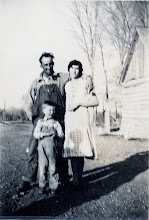

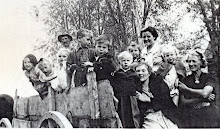
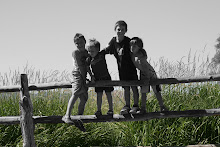
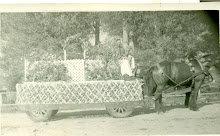
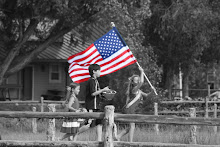
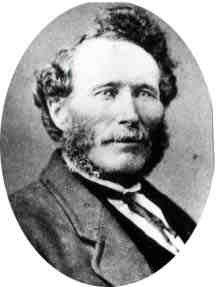
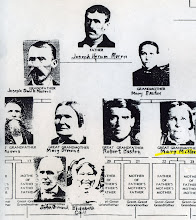
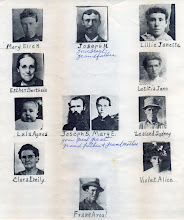
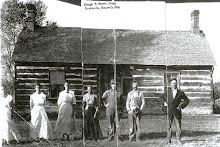
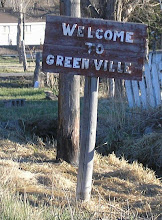
No comments:
Post a Comment